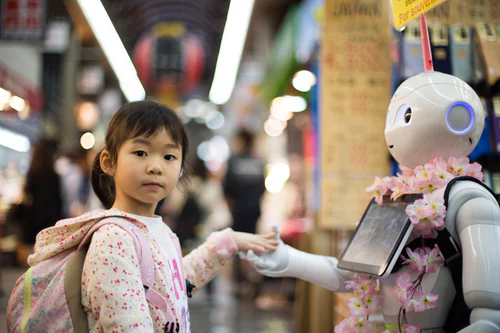
Personalized Bandit Robot Used in Autism Therapy
Introduction:
It is known that autistic children have difficulties in communicating with people, and sometimes with close relatives. In recent years, robots have been attracted to help such children, because there are not enough therapists to practice with children. We are already familierabout the robot with artificial skin KASPAR or about the work of Marek Mishalowski, who uses Keep on robots in the treatment of autism or about the Nerf robotic basketball basket , which helps to create positive emotions in a patient.
Here is another project in autism robotherapy. This robot – Bandit – was developed by researchers from the University of Southern California. There is an interesting feature in it: the current underdevelopment of the emotional sphere of robots and their minimal means of expressing emotions plays a positive role in communicating with autistic children.
Why?
It is difficult for autistic children to isolate the necessary information from the rich set of human facial expressions of their interlocutor. And here, the robot, with its “crude mimicry” is just accessible for the child to understand.
Here is one of the situations studied in the course of the experiments. In the room is a child who sees a two-wheeled humanoid robot with large cartoon eyes slowly approaching it. Bandit Robot uses two infrared cameras to pinpoint the child’s location. Seeing that the boy is moving away from him, the robot is trying to find a different approach to the child. He stops and makes a friendly gesture with his hand. And carefully approaching the child. The child evaluates the “enemy” for a long time, then the child himself approaches the robot and touches it. Naturally, researchers in the next room observe this interaction between the child and the robot through the translucent mirrors in the room.
About Bandit Robot:
Bandit Robot is part of a project designed to build a robot that would be cute to a child and sensitive enough to be a friend and therapist for a child. The robot is programmed to perform simple movements and to produce certain – as yet fairly simple – facial expressions. Scientists continue to work on the robot to enable it to perform complex actions in response to a child’s behavior, child’s games, etc.
The first results of the experiments are encouraging. True, in its current form, the robot can give the child only elementary social skills. So, today the robot cannot yet understand the child’s speech and for it the person-researcher in the next room does it, giving the command to the robot to react in a certain way to the child’s specific actions.
The development team of the robot conducted experiments on the interaction of the robot and fifteen children aged 5-9 years. Although the interaction did not last long – about 5 minutes – many children became more sociable and more active when interacting with the robot.
This may seem surprising, because the robot does not give the child so much warmth and communication as a person. However, many experiments show that children with autism react to machines more naturally than to humans. Psychologist Simon Baron-Cohen (Simon Baron-Cohen), director of the autism research center at Cambridge University, believes that robots, computers and gadgets can be attractive because they are predictable, unlike people. And the unpredictability of a person is of great difficulty for autistic children. Simon says that “this is how they turn away from people, and go to the objective world.”
Note that the robot still has a lot to learn in order to adequately communicate with autistic children. And first of all, it must have a “subtle behavior” in order to react correctly to the behavior of patients, without frightening them. So, if the child begins to sway, which can probably be a sign of heightened anxiety, the robot should be able to recognize movements and change its behavior until the situation seems more comfortable to the child.
Summarizing, we can say that the work of researchers, undoubtedly, hears a positive assessment and has its very serious advantages.



